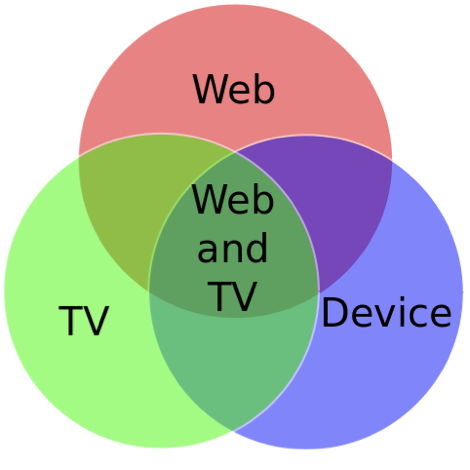W3C at CES: Six new Web+TV Task Forces

As most of the industry, W3C is gearing up for CES and will this year for the first time send a delegation to Las Vegas to spread the word on the Open Web Platform and HTML5. So this is a good moment to give a quick update on the extensive work that's currently ongoing at W3C to enable integration of TV and Web technologies.
Of course, the core of activities is W3C's Web+TV Interest Group. The group has been very active in recent months, and has started no less than six task forces:
This task force is responsible for developing testing requirements specific to Web & TV applications. The focus is expected to be on HTML5 and associated specifications. The Task Force will work with the Web Testing Interest Group and other relevant W3C groups to ensure that Web & TV requirements are met by the W3C testing framework. Related to this, W3C is planning a (member-only) meeting on testing end of January.
Recording and Downloading Media Task Force
This task force will discuss use cases and requirements for downloading, recording, and playing of locally stored/recorded media on the Web.
Terminal Capabilities Task Force
This task force aims to define how terminal capabilities can be addressed within the scope of the Web and TV Interest Group. The goal of TCTF is to discuss use cases of terminal capabilities into classic TV usage and propose solutions or request others TF to work on proposing a solution.
Content Metadata Exposure and Content Synchronization Task Force
This task force aims to investigate how to expose TV metadata to web applications, mapping between Media Element API and in- band metadata and to enable synchronization scenarios up to frame accurate.
This task force will discuss use cases and requirements of stereoscopic 3D rendering on the Web and investigate the impact of 3D videos and graphics on HTML and other web standards.
This task force aims to develop recommendations to facilitate the use of TTML and WebVTT content on the Web, including interoperability with other timed text formats.
However, these days, not all W3C Web+TV work these days happens in the Web+TV IG anynmore. Some of the past requirements work of the IG has now moved into specification groups, most notably
HTML5 support for Adaptive Streaming
The ever-active HTML working group is working on the Media Source Extension specification. It allows JavaScript to dynamically construct media streams for audio and video. It defines objects that allow JavaScript to pass media segments to an HTMLMediaElement. A buffering model is also included to describe how the user agent should act when different media segments are appended at different times. Byte stream specifications for WebM, ISO Base Media File Format, and MPEG-2 Transport Streams are given to specify the expected format of byte streams used with these extensions.
HTML5 support for Protected Content
The Encrypted Media Extensions specification extends HTMLMediaElement providing APIs to control playback of protected content. It allows to discover, select and interact with DRM systems as well as with simpler content encryption systems.
Device Discovery and "Second Screen" apps with HTML5
Specification work is also ongoing for device discovery from HTML5 (the basis for implementing "second screen" applications). Two drafts are in development to cover the requirements in this area: Network Service Discovery and Web Intents.
Comments (0)
Comments for this post are closed.